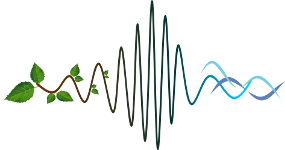Acoustic recordings of the environment are an important aid to ecologists monitoring biodiversity and environmental health. It is fortunate that three major groups of vocal species, birds, insects and frogs, are also accepted as important indicators of environmental health. The group of Sueur et al. has demonstrated that measures of temporal and spectral acoustic entropy are promising surrogates for biodiversity. Likewise, the group of Farina et al. has found that measures of “acoustic complexity” correlate with meaningful ecological parameters. Towsey et al. have shown that combinations of acoustic indices can be more effective in the determination of avian species diversity than single indices.
Rapid advances in recording technology, storage and computing make it possible to accumulate thousands of hours of recordings, of which, ecologists can only listen to a small fraction. This presents a big-data challenge. We address this problem by using acoustic indices (such temporal entropy, ACI, acoustic cover) to construct false-colour spectrograms that permit visualization and navigation through audio recordings on multiple time scales, from hours, days, months to years. False-colour spectrograms map any three indices (ideally acoustically independent of one another) to the red-green-blue colour space. They provide meaningful information to ecologists for navigation purposes and they can be interpreted as soundscape acoustic-fingerprints.
While they have the advantage of easy interpretability, false-colour spectrograms do not easily lend themselves to statistical interpretation. In more recent work, we have constructed “difference spectrograms”, using an (unconstrained) number of relevant acoustic indices, to reveal statistically significant differences between long-duration recordings (days to months) from different locations and/or different times. These can be used to monitor long-term changes in the soundscape of a location.

 PDF version
PDF version
